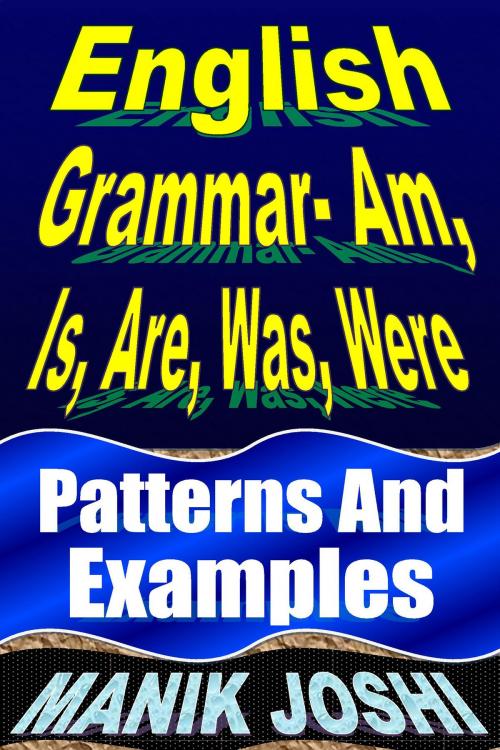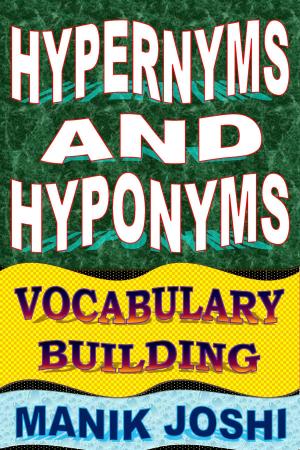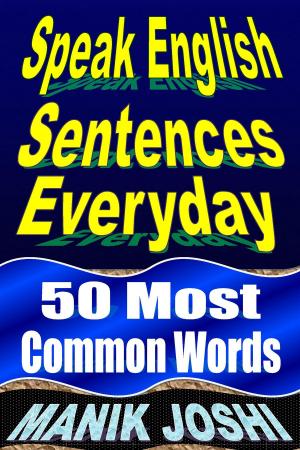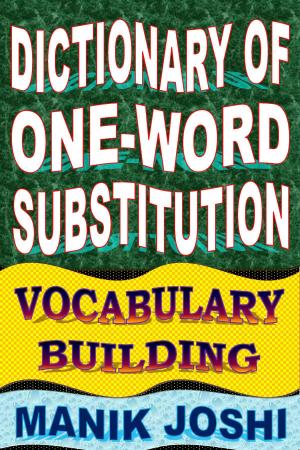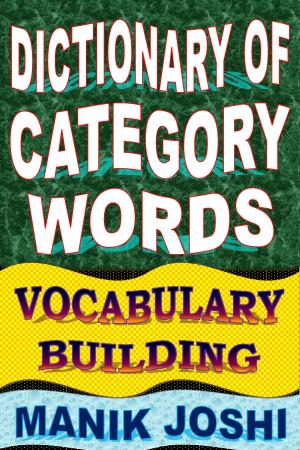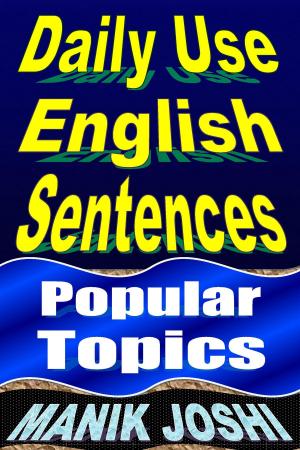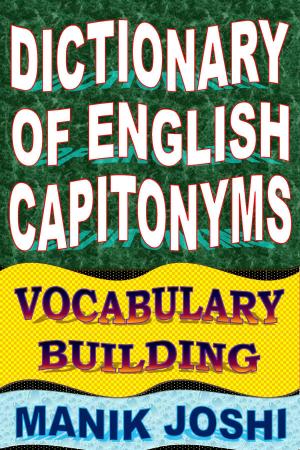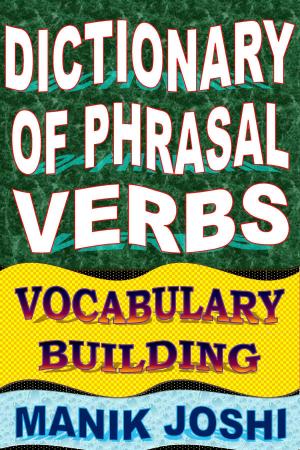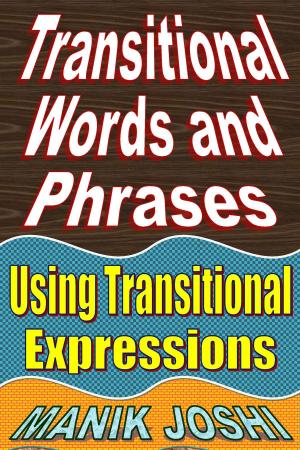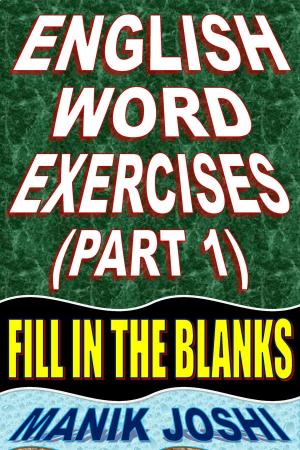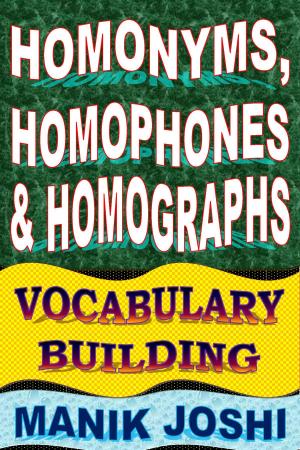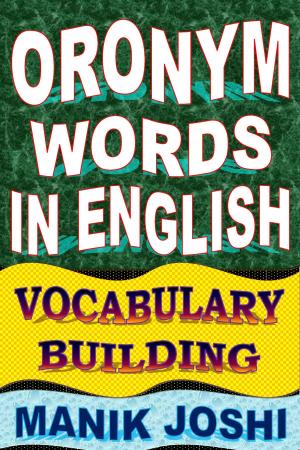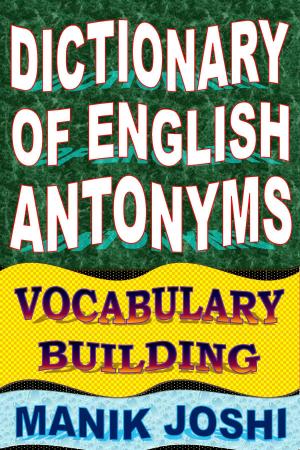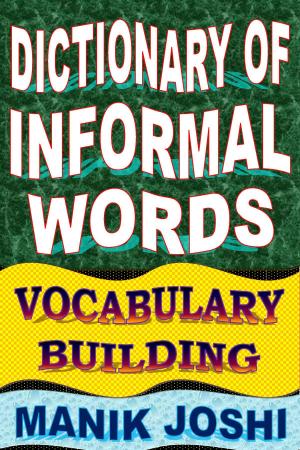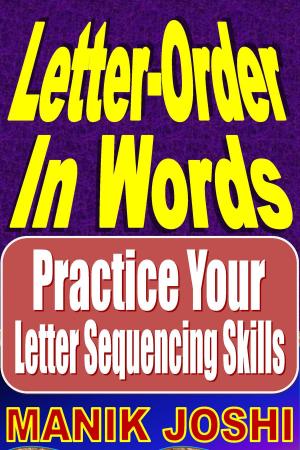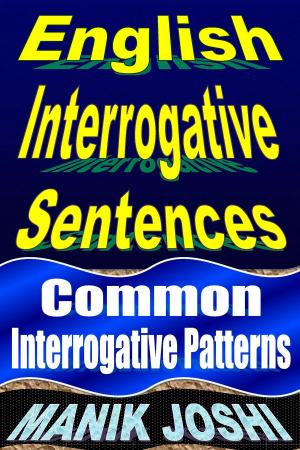English Grammar- Am, Is, Are, Was, Were: Patterns and Examples
Nonfiction, Reference & Language, Education & Teaching, Teaching, Language Experience Approach, Study Aids, ESL, Foreign Languages| Author: | Manik Joshi | ISBN: | 9781301608386 |
| Publisher: | Manik Joshi | Publication: | February 11, 2013 |
| Imprint: | Smashwords Edition | Language: | English |
| Author: | Manik Joshi |
| ISBN: | 9781301608386 |
| Publisher: | Manik Joshi |
| Publication: | February 11, 2013 |
| Imprint: | Smashwords Edition |
| Language: | English |
This Book Covers The Following Topics:
Verb ‘To Be’
Verb ‘To Be’ -- Negative Patterns
Verb ‘To Be’ -- Interrogative Patterns
1A. English Grammar – ‘Am’
1B. AM + -ING Form of Verb
1C. AM + Being + Past Participle
1D. AM + Past Participle
2A. English Grammar – ‘Is’
2B. IS + -ING Form of Verb
2C. IS + Being + Past Participle
2D. IS + Past Participle
3A. English Grammar – ‘Are’
3B. ARE + -ING Form of Verb
3C. ARE + Being + Past Participle
3D. ARE + Past Participle
4A. English Grammar – ‘Was’
4B. WAS + -ING Form of Verb
4C. WAS + Being + Past Participle
4D. WAS + Past Participle
5A. English Grammar – ‘Were’
5B. WERE + -ING Form of Verb
5C. WERE + Being + Past Participle
5D. WERE + Past Participle
Useful Notes
(1): Question Tags
(2): Short Answers (Ellipsis]
(3): Addition to Remarks
(4): There Is/Was and There Are/Were
(5): Subjunctive Mood – ‘Were’
(6): Be + Going To + Verb Word
(7): ‘Used to’ Vs. ‘Be + Used to’
(8): Be + To + Verb Word
(9): Be + ‘Being”+ Adjective
(10): Mixed Sentences
Exercises: 1(A) and 1(B)
Exercises: 2(A) to 2(E)
Sample This:
Verb ‘To Be’
The Verb ‘to be’ is used to represent the following English verbs:
‘Am’, ‘Is’, ‘Are’, ‘Was’, ‘Were’
The verb ‘to be’ is used as both linking verb and auxiliary verb.
LINKING VERB:
A verb that connects a subject with the complement (adjective or noun) that describes it.
Example: He is an engineer. [In this sentence, subject (he) and noun (engineer) is connected by linking verb ‘is’. There is no main verb in this sentence.]
Some more examples:
I am happy. [linking verb – am]
Is he good boy? [linking verb – is]
We are very proud of ourselves. [linking verb – are]
She was intelligent. [linking verb – was]
They were not late by half an hour. [linking verb – were]
AUXILIARY VERB:
A verb which is used with main verb to show tenses, etc.
Example: He is going to office. [In this sentence, -ing form of main verb ‘go’ has been used with auxiliary verb ‘is’.
Some more examples:
I am studying a book. [auxiliary verb – am | main verb – study (-ing form)]
He is working on his project [auxiliary verb – is | main verb – work (-ing form)]
We are not expected to tell the secret. [auxiliary verb – are | main verb – expect (past participle form)]
She was taught by me. [auxiliary verb – was | main verb – teach (past participle form)]
Were they burdened by high taxation [auxiliary verb – were | main verb – burden (past participle form)]
IMPORTANT POINTS ABOUT VERB ‘TO BE’
‘AM’ –
Singular Verb
Used In Present Tense
Used with Subject ‘I’
‘IS’ –
Singular Verb
Used In Present Tense
Used with Subject ‘He’ ‘She’, ‘It’ and other Singular Subjects
‘ARE’ –
Plural Verb
Used In Present Tense
Used with Subject ‘We’, ‘You’, ‘They’ and other Plural Subjects
‘WAS’ –
Singular Verb
Used In Past Tense
Used with Subject ‘I’, ‘He’, She’, ‘It’ and other Singular Subjects
‘WERE’ –
Plural Verb
Used In Past Tense
Used with Subject ‘We’, ‘You’ and other Plural Subjects
This Book Covers The Following Topics:
Verb ‘To Be’
Verb ‘To Be’ -- Negative Patterns
Verb ‘To Be’ -- Interrogative Patterns
1A. English Grammar – ‘Am’
1B. AM + -ING Form of Verb
1C. AM + Being + Past Participle
1D. AM + Past Participle
2A. English Grammar – ‘Is’
2B. IS + -ING Form of Verb
2C. IS + Being + Past Participle
2D. IS + Past Participle
3A. English Grammar – ‘Are’
3B. ARE + -ING Form of Verb
3C. ARE + Being + Past Participle
3D. ARE + Past Participle
4A. English Grammar – ‘Was’
4B. WAS + -ING Form of Verb
4C. WAS + Being + Past Participle
4D. WAS + Past Participle
5A. English Grammar – ‘Were’
5B. WERE + -ING Form of Verb
5C. WERE + Being + Past Participle
5D. WERE + Past Participle
Useful Notes
(1): Question Tags
(2): Short Answers (Ellipsis]
(3): Addition to Remarks
(4): There Is/Was and There Are/Were
(5): Subjunctive Mood – ‘Were’
(6): Be + Going To + Verb Word
(7): ‘Used to’ Vs. ‘Be + Used to’
(8): Be + To + Verb Word
(9): Be + ‘Being”+ Adjective
(10): Mixed Sentences
Exercises: 1(A) and 1(B)
Exercises: 2(A) to 2(E)
Sample This:
Verb ‘To Be’
The Verb ‘to be’ is used to represent the following English verbs:
‘Am’, ‘Is’, ‘Are’, ‘Was’, ‘Were’
The verb ‘to be’ is used as both linking verb and auxiliary verb.
LINKING VERB:
A verb that connects a subject with the complement (adjective or noun) that describes it.
Example: He is an engineer. [In this sentence, subject (he) and noun (engineer) is connected by linking verb ‘is’. There is no main verb in this sentence.]
Some more examples:
I am happy. [linking verb – am]
Is he good boy? [linking verb – is]
We are very proud of ourselves. [linking verb – are]
She was intelligent. [linking verb – was]
They were not late by half an hour. [linking verb – were]
AUXILIARY VERB:
A verb which is used with main verb to show tenses, etc.
Example: He is going to office. [In this sentence, -ing form of main verb ‘go’ has been used with auxiliary verb ‘is’.
Some more examples:
I am studying a book. [auxiliary verb – am | main verb – study (-ing form)]
He is working on his project [auxiliary verb – is | main verb – work (-ing form)]
We are not expected to tell the secret. [auxiliary verb – are | main verb – expect (past participle form)]
She was taught by me. [auxiliary verb – was | main verb – teach (past participle form)]
Were they burdened by high taxation [auxiliary verb – were | main verb – burden (past participle form)]
IMPORTANT POINTS ABOUT VERB ‘TO BE’
‘AM’ –
Singular Verb
Used In Present Tense
Used with Subject ‘I’
‘IS’ –
Singular Verb
Used In Present Tense
Used with Subject ‘He’ ‘She’, ‘It’ and other Singular Subjects
‘ARE’ –
Plural Verb
Used In Present Tense
Used with Subject ‘We’, ‘You’, ‘They’ and other Plural Subjects
‘WAS’ –
Singular Verb
Used In Past Tense
Used with Subject ‘I’, ‘He’, She’, ‘It’ and other Singular Subjects
‘WERE’ –
Plural Verb
Used In Past Tense
Used with Subject ‘We’, ‘You’ and other Plural Subjects
